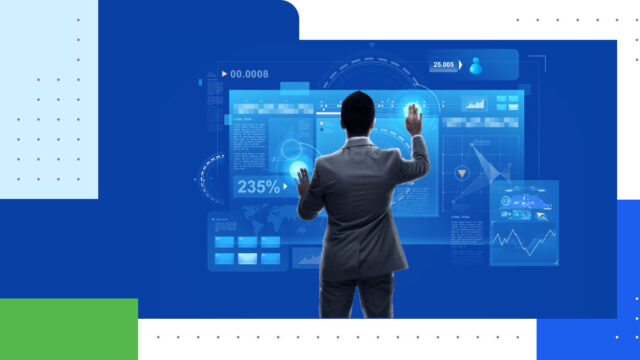
How the end of cash will likely affect your business clients
Discover how to prepare for a future without paper money.
Fewer people are using cash in today’s economy. According to the Federal Reserve Bank of San Francisco, only 20 percent of consumers’ monthly transactions involve cash. This percentage shows a significant downward trend. In 2019, 26 percent of payments were in cash, and in 2017, the figure was 30 percent.
This rapid decline coincides with increases in the use of debit and credit, but also other cashless options, such as mobile wallets and cryptocurrency.
What does this change mean for businesses and the accounting firms they work with? In the short term, companies need to take steps to facilitate electronic payments with newer point-of-sale terminals and processing services. Though some firms, especially smaller ones, may see these tech updates as a costly challenge, the investment can bring significant advantages to operations of all sizes.
Blockchain technology, which creates public ledgers to facilitate transactions and track assets like cryptocurrency, will help push economies further away from cash. Even though crypto is sometimes volatile, blockchain systems can also be used for payment processing and logging transactions, which can be attractive for payments, record-keeping and accounting.
Here is a closer look at the drawbacks and advantages of cashless payments and how businesses and accountants can prepare for a future without paper money.
Reduced operating costs
Cash payments do not trigger any transaction fees, but there are costs associated with handling paper money.
First of all, a business needs to physically secure cash. Retail companies lose about $40 billion in cash to theft in the U.S. each year. They have to combat this danger by taking daily trips to the bank to deposit cash or hiring an armored car and armed couriers to carry the money to the bank. Other expenses can include enhanced security systems and cash registers.
Cash needs to be counted and amounts verified manually, which takes employee hours and can add to bookkeeping costs. You can also lose money from cash handling errors or employee fraud, such as under-ringing and pocketing the extra money. After shoplifting, these are the two most common loss areas for retail businesses.
Finally, small businesses can lose revenue if they rely too heavily on cash. A survey by Finder and Pureprofile found that 11.8 million consumers would stop shopping at businesses that didn’t offer cashless payment options.
More convenience for consumers
Cashless shopping can bridge the gap between brick-and-mortar retail and e-commerce. Consumers can browse for products and make purchases on their phones and then use the same payment methods when shopping at a retail store. This will also allow them to compare online and in-store prices and make purchase decisions accordingly.
Data backs up this change. Currently, e-commerce accounts for 14.3 percent of all retail sales. A decade ago, online shopping only had a 6 percent market share. Retailers can take advantage of this trend by redesigning their website, launching an app version of their online store, and increasing the cashless payment options for both online and brick-and-mortar purchases.
The online shopping trend is also convenient for businesses. It will make marketing and customer relationship management easier. Businesses can keep a record of shoppers’ online purchases, price checks and browsing to provide them with highly targeted marketing content.
Credit and debit card fees
One of the biggest issues companies have to deal with when going cashless is the fee for processing credit and debit card transactions. These fees can vary depending on several variables, including the type of card, category of purchase and variety of business.
There are two components to a credit card fee. The interchange fee goes to the card issuer, which is typically a bank or financial services company. There is also a smaller assessment fee that goes to the payment network (Visa, Mastercard, American Express or Discover, for example). Retailers also have to rent or purchase payment processing equipment, which they can sometimes pay for via a small additional fee on each transaction.
The fee can be between 1.5 percent and 3.5 percent, and it usually includes a percentage of the overall transaction value plus a small flat fee. For example, a transaction could cost 3.1 percent plus a 10-cent flat fee. This flat fee ensures the processors and network get their fee even for small purchases.
The primary drawback to cashless transactions is that businesses get stuck with these fees. They have to accept the extra cost, look for ways to lower them, or adjust their pricing to pass the cost on to consumers.
Blockchain technology may eventually change this fee structure because it will allow individuals and businesses to interact directly with payments logged on a public ledger instead of through a payment processor, card issuer and network.
More accurate auditing
The switch to blockchain-based payments will also change the methodology for both internal and external audits.
Every transaction that occurs on the blockchain is permanently logged and cannot be changed due to its encryption. The blockchain is becoming crucial for internal auditors because it creates an instant audit trail that no one can manipulate. Companies can figure out how to get their internal auditors access to the blockchain data so they can get a complete history of all transactions — in fact, some think auditors can’t afford to ignore the blockchain because of how beneficial it can be.
For example, an organization could give the company a complete list of blockchain transactions, or they could provide the auditors with an API tool to extract the necessary data and place it on spreadsheets or other working papers for use during their review.
Though the permanent, accessible nature of blockchain data can streamline audits, auditors will have to account for new considerations, such as how blockchain connects with other technologies that a company uses.
The transparent nature of the blockchain also helps external auditors. With the information at their fingertips, they can verify transactions without having to ask for additional information, ledgers or receipts from the subject of the audit.
Preparing a business for a cashless economy
There are benefits and drawbacks to adopting cashless payment options or choosing to forgo paper money altogether. With trends showing strong growth for cashless payment methods and companies like IBM, Microsoft and JP Morgan launching blockchain payment solutions, businesses will eventually have to embrace a cashless economy.
Organizations can take specific steps to start preparing for a cashless future.
Prioritize cybersecurity
The rise of e-commerce, cashless payments and data analytics has coincided with an increase in cybercrime. Hackers inflicted $6 trillion in damages globally in 2021, with some of the world’s highest-profile companies among the victims.
Not only do companies have to ensure their websites and payment systems are secure, they also need to protect their financial data. Corporate accounting has changed in the last 40 years; with customer information and accounting records stored digitally, companies need to improve firewalls, manage users and ensure secure access to databases.
A well-rounded cybersecurity strategy can help keep necessary financial data and payment systems safe. This includes training employees to follow cybersecurity best practices and using new technology to restrict and monitor access.
Allow for a range of payment options
There are a vast number of cashless payment options. Point-of-sale terminals and online payment processors allow businesses to accept credit and debit cards from some or all of the major networks. However, customers may expect other options, as well.
Mobile wallets are also increasing in popularity. By 2025, 43.7 percent of Americans will make at least one purchase using apps like Apple Pay or Google Pay. These methods require payment processing with near-field communication (NFC) capabilities. Cryptocurrency payments, meanwhile, may require a QR code reader or a cryptocurrency wallet address.
The last thing a business wants to do is to turn customers away because they do not have a payment method in place to serve them.
Implement remote cash flow monitoring
Cashless transactions are easier to track. With the right software and accounting system, companies can monitor cash flow and populate financial reports automatically. This digitized working papers accounting process is beneficial, allowing you to monitor cash flow and other financial information regularly instead of waiting for quarterly or annual reports.
Accountants and auditors can also benefit from this expedient workflow using working papers software. For example, internal auditors can use digital payment data to populate working papers that they will use to conduct their audits.
Cloud-based software makes this remote setup possible. Accountants, executives and auditors can access the financial data remotely without having to be in the same areas.








